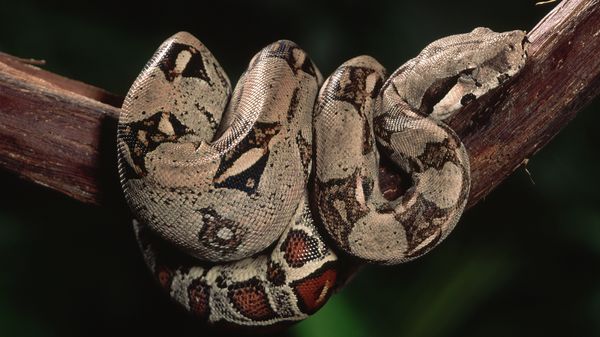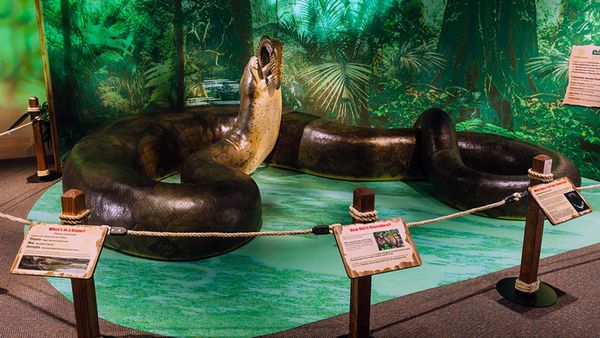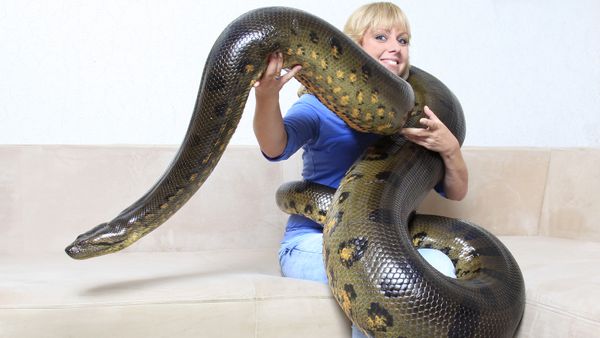This boa exhibits adept hunting behaviors, honed to capture a variety of prey in its natural habitat efficiently. As a constrictor, it primarily relies on the element of surprise and physical strength to subdue its targets. Typically, Cuban boas hunt at night, leveraging their nocturnal nature to stalk prey under the cover of darkness.
A key aspect of its hunting strategy is ambush predation. The Cuban boa will often lie in wait, camouflaged against its surroundings, until an unsuspecting prey animal comes within striking range.
This could be on the forest floor, among the branches of trees or in rocky crevices, depending on where the semi-arboreal boa is hunting.
The Cuban boa strikes quickly and precisely once it detects a potential meal, whether a rodent, bird or small reptile. Its sharp teeth are effective in gripping the prey, preventing escape.
The boa then wraps its muscular body around the captured animal, constricting its coils to suffocate the prey. This method of killing is swift and allows the boa to handle prey items that are quite large relative to its size.
Its ability to adapt hunting tactics to different environments and prey types underscores its status as a skilled and versatile top terrestrial predator in the Cuban ecosystem.
A Band of Boas
A 2017 study revealed that some Cuban boas engage in a rare form of pack hunting within caves, coordinating their efforts to catch bats. Typically solitary in their hunting habits, these boas have been observed forming a "wall" or "curtain" at cave entrances, striking in unison to increase their hunting efficiency.
This behavior, noted by the University of Tennessee's Vladimir Dinets, demonstrates a unique example of group hunting and strategic positioning among snakes, significantly enhancing their success rate in capturing bats. The study, highlighting this exceptional hunting strategy, was published in the journal "Animal Behavior and Cognition."



